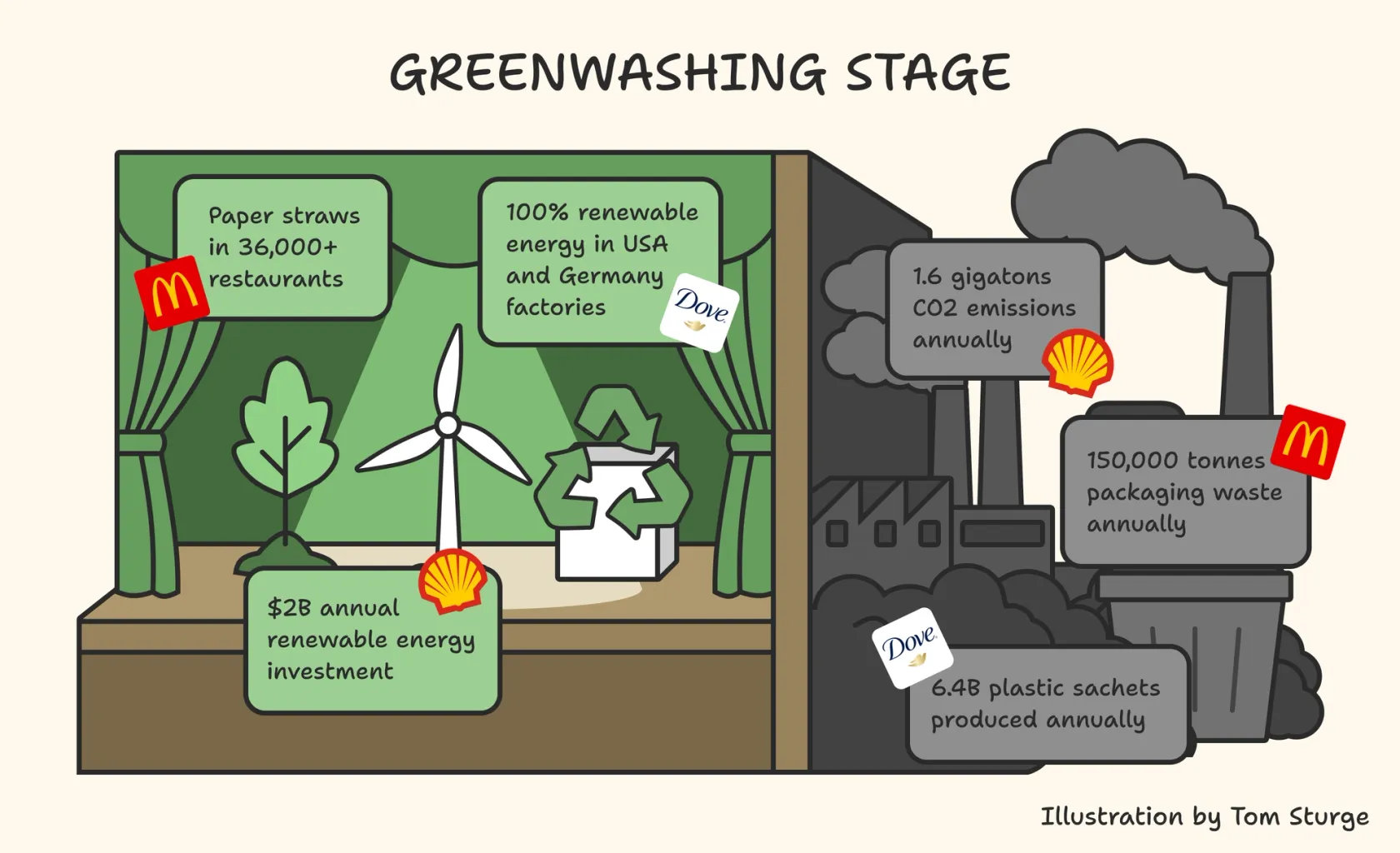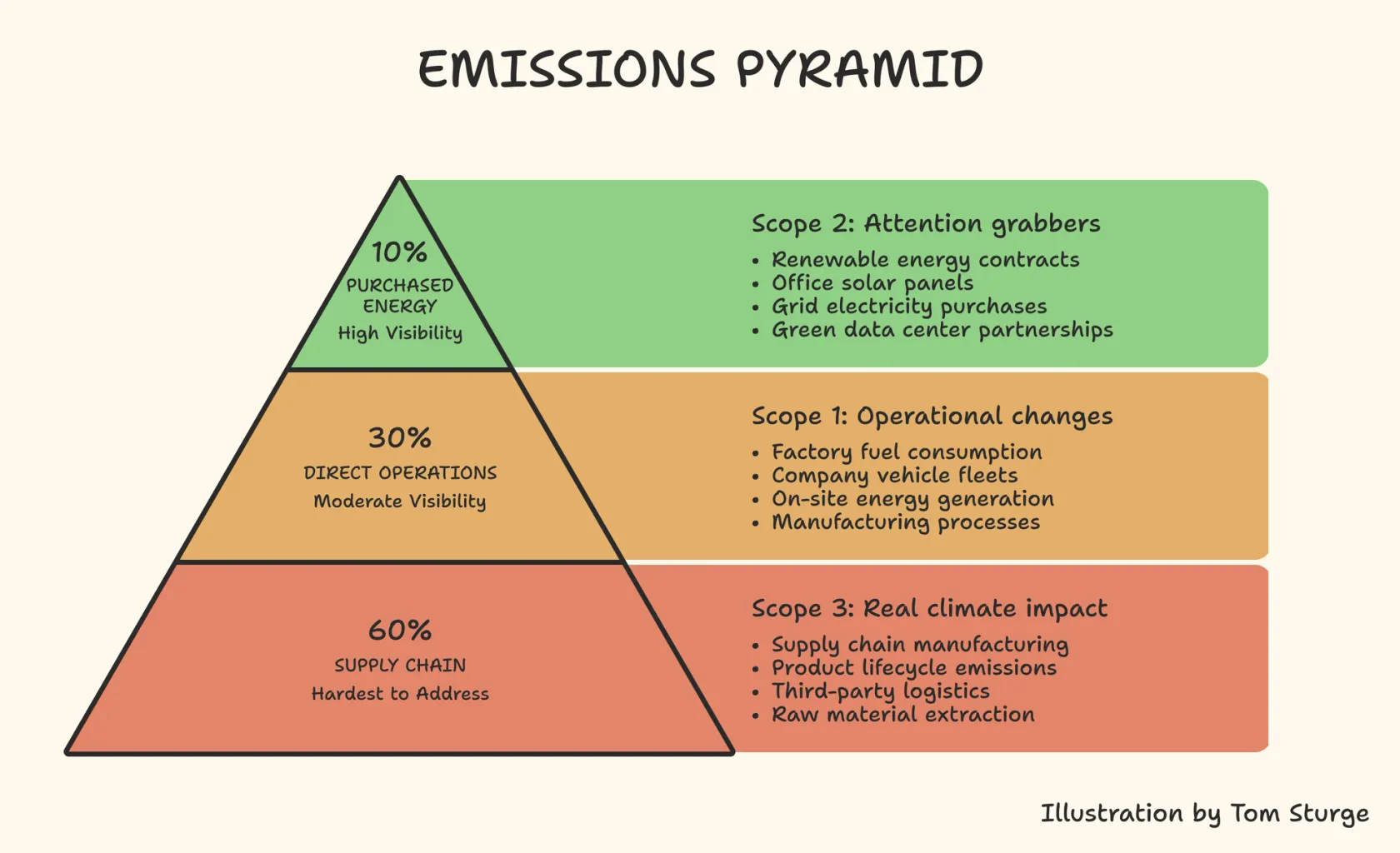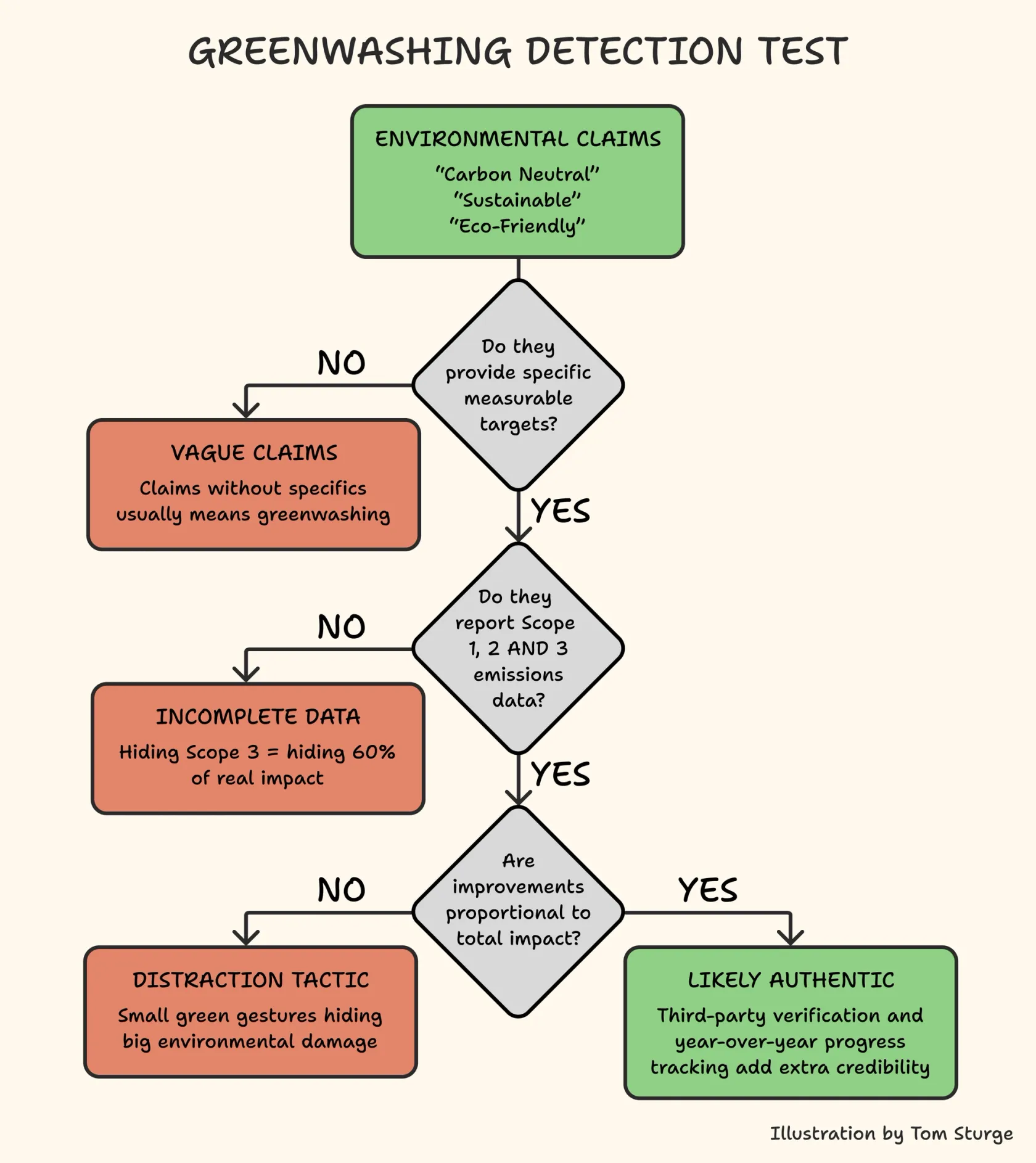You see the advertisement everywhere. Your coffee chain announces they're "going green" with paper cups and bamboo stirrers. The airline you use emails about "carbon neutral flights" through tree planting partnerships. Your bank's website displays their "renewable energy commitment" alongside wind turbine photos.
Each announcement feels positive. These companies seem to care about the environment. You feel better supporting them, confident you're making responsible choices.
Then you discover the reality. The coffee chain's paper cups require plastic linings that make them unrecyclable. The airline's tree planting offsets represent less than 5% of their actual emissions. Your bank's renewable energy powers only their head office whilst their investment portfolio funds fossil fuel expansion.
As someone who checks OpenFoodFacts before purchasing to understand actual environmental impact, who makes environmental choices from plant-based eating to packaging recyclability, this corporate environmental theatre is particularly frustrating. When you're making genuine lifestyle changes based on environmental impact, watching companies claim sustainability through marketing feels like being taken for a fool.
This disconnect between green gestures and environmental reality has become the defining challenge for anyone trying to make informed decisions about which companies to support. When every organisation claims to be environmentally responsible, how do you separate genuine action from marketing performance?
How to Spot Environmental Performance Art
Once you know the pattern, environmental performance art becomes easy to identify. Companies choose highly visible, photographable actions over fundamental business model changes that would actually reduce environmental impact.
Consider Dove's twenty-year "Real Beauty" campaign. The same company that built a reputation championing authentic self-acceptance produces 6.4 billion plastic sachets annually. When Greenpeace exposed this contradiction, they created a devastating parallel campaign showing real customers' reactions to learning about the environmental reality behind the feel-good marketing.
Shell provides another example. Their $2 billion annual renewable energy investment sounds impressive until you realise it represents just 8% of their total spending. Meanwhile, the company emits 1.6 gigatons of CO2 equivalent annually, making their renewable investments appear more like marketing budget than genuine transformation.

Tree planting has become the poster child for environmental performance art. Companies can generate compelling visuals of employees with shovels, making tangible environmental contributions.
The reality proves more complex. Virgin Atlantic's Cambodia afforestation program was meant to offset flight emissions. Continuing deforestation in the same region reversed the carbon sequestration, making the offsets meaningless whilst the airline continued operating carbon-intensive flights.
"Tree planting for carbon offsets allows companies to maintain a façade of environmental responsibility without making the difficult and necessary changes that would actually reduce their emissions." ESG PRO Ltd. research on carbon offset greenwashing
Carbon offsets promise companies can "cancel out" emissions by funding environmental projects elsewhere. MIT Technology Review discovered that the Massachusetts Audubon Society received carbon credits for conserving forests that were never in danger of being cut down. Companies purchasing these credits believed they were offsetting emissions whilst no additional environmental benefit occurred.
What to Look for in Environmental Claims

When evaluating corporate environmental claims, look for what they're not telling you. Companies report emissions across three categories: Scope 1 (direct emissions from operations), Scope 2 (purchased energy), and Scope 3 (supply chain and product lifecycle).
Most companies highlight Scope 2 improvements whilst avoiding discussion of Scope 1 and 3 emissions. When you see renewable energy announcements without broader emissions data, that's often a sign they're addressing the easiest category whilst ignoring their biggest environmental impacts.
Ask whether environmental improvements would have happened anyway. When companies fund projects that would occur regardless of their investment, they're paying for environmental progress illusion.
Always compare green gesture scale to total environmental impact. Shell's $2 billion renewable investment sounds substantial until you realise they continue emitting 1.6 gigatons annually. This proportionality check reveals whether initiatives address core problems or distract from them.
Dove claims to reduce 20,500 tonnes of virgin plastic annually through packaging improvements. Meanwhile, they produce 6.4 billion plastic sachets generating over 64,000 tonnes of plastic waste. Their "reduction" is dwarfed by continued massive plastic production.
When you're making environmental choices from plant-based eating to checking packaging recyclability, this corporate contradiction becomes impossible to ignore. The environmental considerations influencing your daily decisions reveal how misleading these corporate claims are.
Once you understand greenwashing patterns, companies taking genuine environmental action become obvious by contrast. They share comprehensive emissions data across all three scopes and explain their methodology honestly.
They acknowledge their biggest environmental challenges rather than highlighting only successes. When Patagonia discusses environmental impact, they include detailed supply chain challenges and trade-offs in their material choices. This transparency builds credibility by acknowledging complexity rather than presenting simple solutions.
You can verify authentic claims by checking whether external stakeholders agree with corporate environmental narratives. Dove's experience with Greenpeace demonstrates what happens when environmental claims don't match stakeholder reality. Companies taking genuine action integrate environmental considerations into core business operations rather than treating them as separate marketing initiatives.
Your Role in Changing Corporate Behaviour

"The demand for new data centers cannot be met in a sustainable way. The pace at which companies are building new data centers means the bulk of the electricity to power them must come from fossil fuel-based power plants." Noman Bashir, MIT Climate and Sustainability Consortium fellow
This honest assessment of technological environmental impact provides a model for authentic environmental communication. Rather than highlighting minor improvements whilst ignoring major problems, it addresses the systemic challenges that require genuine solutions.
The next time you see corporate environmental claims, ask the three questions from the flowchart. Look for the proportionality gaps between green gestures and actual impact. Check whether they're reporting all three emission scopes or just highlighting the easy wins.
The companies engaging in authentic environmental action will stand out clearly once you know what to look for. They'll acknowledge their biggest impacts honestly, show meaningful progress on the hardest problems, and admit when they don't have all the answers yet.
Your awareness of these patterns matters. When enough people can spot greenwashing, companies lose the marketing value of environmental performance art. That's when they start focusing on substance instead of theatre.
